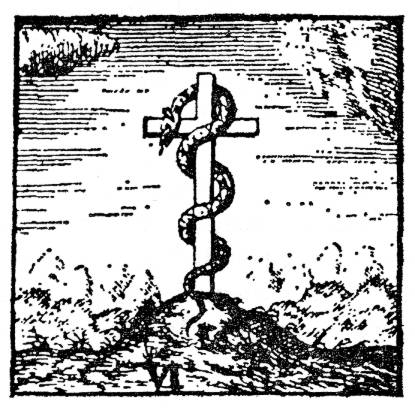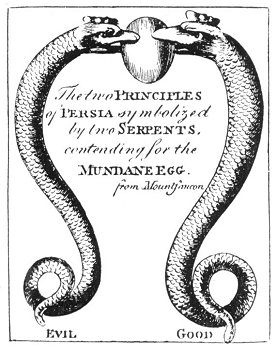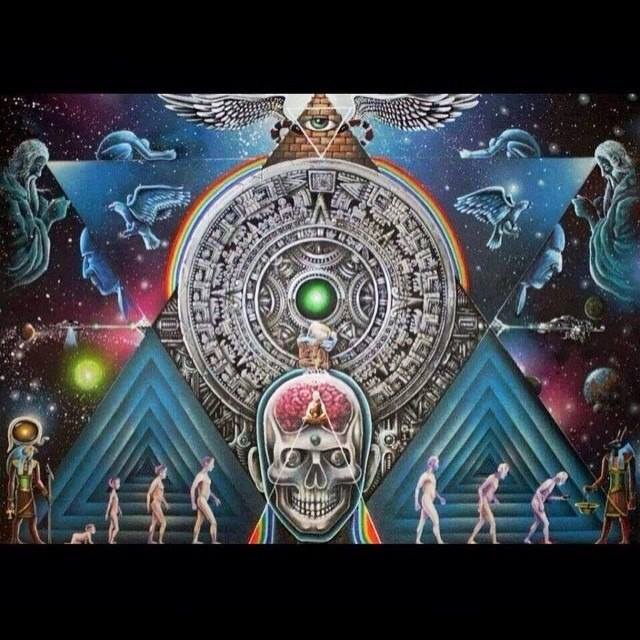To the Egyptians the sun was the symbol of immortality, for, while it died each night, it rose again with each ensuing dawn. Not only has the sun this diurnal activity, but it also has its annual pilgrimage, during which time it passes successively through the twelve celestial houses of the heavens, remaining in each for thirty days. Added to these it has a third path of travel, which is called the precession of the equinoxes, in which it retrogrades around the zodiac through the twelve signs at the rate of one degree every seventy-two years.
Concerning the annual passage of the sun through the twelve houses of the heavens, Robert Hewitt Brown, 32°, makes the following statement: “The Sun, as he pursued his way among these ‘living creatures’ of the zodiac, was said, in allegorical language, either to assume the nature of or to triumph over the sign he entered. The sun thus became a Bull in Taurus, and was worshipped as such by the Egyptians under the name of Apis, and by the Assyrians as Bel, Baal, or Bul. In Leo the sun became a Lion-slayer, Hercules, and an Archer in Sagittarius. In Pisces, the Fishes, he was a fish–Dagon, or Vishnu, the fish-god of the Philistines and Hindoos.”
A careful analysis of the religious systems of pagandom uncovers much evidence of the fact that its priests served the solar energy and that their Supreme Deity was in every case this Divine Light personified. Godfrey Higgins, after thirty years of inquiry into the origin of religious beliefs, is of the opinion that “All the Gods of antiquity resolved themselves into the solar fire, sometimes itself as God, or sometimes an emblem or shekinah of that higher principle, known by the name of the creative Being or God.”
The Egyptian priests in many of their ceremonies wore the skins of lions, which were symbols of the solar orb, owing to the fact that the sun is exalted, dignified, and most fortunately placed in the constellation of Leo, which he rules and which was at one time the keystone of the celestial arch. Again, Hercules is the Solar Deity, for as this mighty hunter performed his twelve labors, so the sun, in traversing the twelve houses of the zodiacal band, performs during his pilgrimage twelve essential and benevolent labors for the human race and for Nature in general, Hercules, like the Egyptian priests, wore the skin of a lion for a girdle. Samson, the Hebrew hero, as his
THE LION OF THE SUN.
From Maurice’s Indian Antiquities. The sun rising over the back of the lion or, astrologically, in the back of the lion, has always been considered symbolic of power and rulership. A symbol very similar to the one above appears on the flag of Persia, whose people have always been sun worshipers. Kings and emperors have frequently associated their terrestrial power with the celestial Power of the solar orb, and have accepted the sun, or one of its symbolic beasts or birds, as their emblem. Witness the lion of the Great Mogul and the eagles of Cæsar and Napoleon.
THE WINGED GLOBE OF EGYPT.
From Maurice’s Indian Antiquities. This symbol, which appears over the Pylons or gates of many Egyptian palaces and temples, is emblematic of the three persons of the Egyptian Trinity. The wings, the serpents, and the solar orb are the insignia of Ammon, Ra, and Osiris.
p. 50
name implies, is also a solar deity. His fight with the Nubian lion, his battles with the Philistines, who represent the Powers of Darkness, and his memorable feat of carrying off the gates of Gaza, all refer to aspects of solar activity. Many of the ancient peoples had more than one solar deity; in fact, all of the gods and goddesses were supposed to partake, in part at least, of the sun’s effulgence.
The golden ornaments used by the priestcraft of the various world religions are again a subtle reference to the solar energy, as are also the crowns of kings. In ancient times, crowns had a number of points extending outward like the rays of the sun, but modern conventionalism has, in many cases, either removed the points or else bent: them inward, gathered them together, and placed an orb or cross upon the point where they meet. Many of the ancient prophets, philosophers, and dignitaries carried a scepter, the upper end of which bore a representation of the solar globe surrounded by emanating rays. All the kingdoms of earth were but copies of the kingdoms of Heaven, and the kingdoms of Heaven were best symbolized by the solar kingdom, in which the sun was the supreme ruler, the planets his privy council, and all Nature the subjects of his empire.

Moe is the founder of GnosticWarrior.com. He is a father, husband, author, martial arts black belt, and an expert in Gnosticism, the occult, and esotericism.








